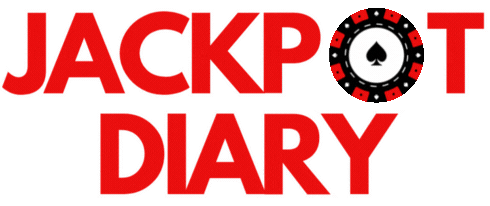Technical Terms in Game Development—From RNG to RTP
🎮 Introduction: Why Understanding Game Tech Terms Matters Behind every spin, every card flip, every jackpot bell—there’s an entire ecosystem of code, probabilities, and backend mechanics working invisibly to power it all. If you’re entering the world of game development for iGaming, or even operating a casino brand, understanding the technical language of development isn’t optional. It’s the difference between trusting your suppliers and being blindsided by bad math or buggy platforms. This guide breaks down the most important technical terms used in gambling game development—from RNGs to RTP, and everything in between. 🔢 1. RNG (Random Number Generator) Definition:An algorithm that ensures every game event (like a slot spin or card draw) is unpredictable and fair. Why It Matters:RNGs are the backbone of fairness in digital games. Regulators require third-party testing (e.g., iTech Labs, eCOGRA) to certify that RNGs behave as expected. True RNG vs. Pseudo-RNG: 📈 2. RTP (Return to Player) Definition:The theoretical percentage of total wagered money that a game will pay back to players over time. Example:An RTP of 96.5% means the house edge is 3.5%. Important Note:RTP is not a guarantee—it’s averaged over millions of spins. Short-term player experiences can vary wildly. RTP Transparency in 2025:With regulators like the UKGC demanding more disclosure, many platforms now display RTP visibly or offer player-adjustable RTP levels. ⚖️ 3. Volatility (aka Variance) Definition:Measures how often and how much a game pays out. Why It’s Crucial:Game developers use volatility to align with target player psychology. Casual players tend to prefer low-volatility games, while thrill-seekers chase big hits. 🛠️ 4. SDK (Software Development Kit) Definition:A bundle of development tools, libraries, and documentation provided by platforms or engines (like Unity or proprietary frameworks) to help build gambling games. Includes: Why Use One:SDKs accelerate dev time and ensure compatibility with existing platforms. 📡 5. API (Application Programming Interface) Definition:A set of rules and protocols that allow two software systems to communicate. Example Uses: Modern Requirement:In 2025, modular, API-first design is becoming the default for scalable game ecosystems. 🔁 6. Reels & Paylines Reels: The vertical columns of symbols that spin. Paylines: The paths across the reels where symbol matches result in payouts. Innovation Trends: Why This Matters to Devs:It impacts UI design, math models, and RTP structuring. 🎯 7. Hit Frequency Definition:The statistical likelihood that a player will win any prize during a spin. Example:A game with a hit frequency of 30% means 3 out of 10 spins result in a win, regardless of size. Design Implication:It affects perceived generosity and player retention curves. 🧮 8. Paytable Definition:The internal matrix that defines all possible symbol combinations and their respective payouts. Things to Consider in Development: Devs often use Excel or Lua-based tools to simulate payout behaviors before writing the final code. 🔄 9. Game Loop Definition:The recurring cycle of input, processing, and output that defines one complete round of gameplay. For Slots, A Typical Loop: Why This Technicality Matters:Smooth loops = player immersion. Laggy or mismatched animations = poor UX = churn. 🔐 10. Fairness Certification Definition:Third-party audit and validation of a game’s randomness, payout system, and player fairness. Top Certifiers: Developers must submit: 🧩 11. Game Engine Definition:The framework used to build and render a game, including physics, graphics, audio, and logic. Popular Choices: 2025 Trend:Most modern iGaming developers build in HTML5-first environments for cross-device playability. 📊 12. Game Weighting (for Bonus Contribution) Definition:Percentage of a game’s play that counts toward bonus wagering requirements. Example: Operator Use Case:Helps prevent bonus abuse by steering players toward specific games. 🔄 13. Autoplay Logic Definition:Code that allows players to automatically spin a predefined number of rounds. Features Include: 2025 Compliance Note:Jurisdictions like the UK ban or heavily restrict autoplay to promote responsible gambling. 🔒 14. Gamble Feature Logic Definition:Optional mini-games where players can risk winnings for a chance to multiply them (e.g., double-or-nothing). Tech Consideration: 🎯 15. Bonus Mechanics Common Types: Backend Triggers:Often built using event handlers or math-based probability tables. Strong bonus mechanics increase session duration and player loyalty. 📡 16. Server-Side vs. Client-Side Logic Client-Side:Handles visuals, animations, and sound. Server-Side:Handles RNG, outcome determination, balance updates. Why This Separation?To prevent client-side manipulation (e.g., cheating). Outcome is always determined securely on the server. 📁 17. RTP Banding Definition:Creating multiple versions of a game with different RTP levels, targeted to different markets or operators. Example: Compliance Risk:In some markets (like the UK), this practice must be fully disclosed to players. 💬 18. Localization Variables Definition:Dynamic content changes based on region (currency, language, legal disclaimers). Devs Must Plan For: 👨💻 19. DevOps for iGaming Definition:The integration of development and operations for seamless deployment, QA, and patching of gambling games. Includes: High uptime is critical. A down game = lost revenue + player distrust. 📣 20. Game Release Cycle Stages: 2025 Update:Most developers run A/B tests and limited beta rollouts before pushing games to major aggregators like Relax Gaming, SoftSwiss, or EveryMatrix. 🔚 Conclusion: Speak the Language, Build the Future Understanding the technical vocabulary of iGaming game development isn’t just for coders—it’s for founders, marketers, product managers, and compliance leads too. Whether you’re outsourcing game builds, integrating third-party titles, or launching your own studio, fluency in these terms helps you spot red flags, streamline communication, and craft better user experiences.







